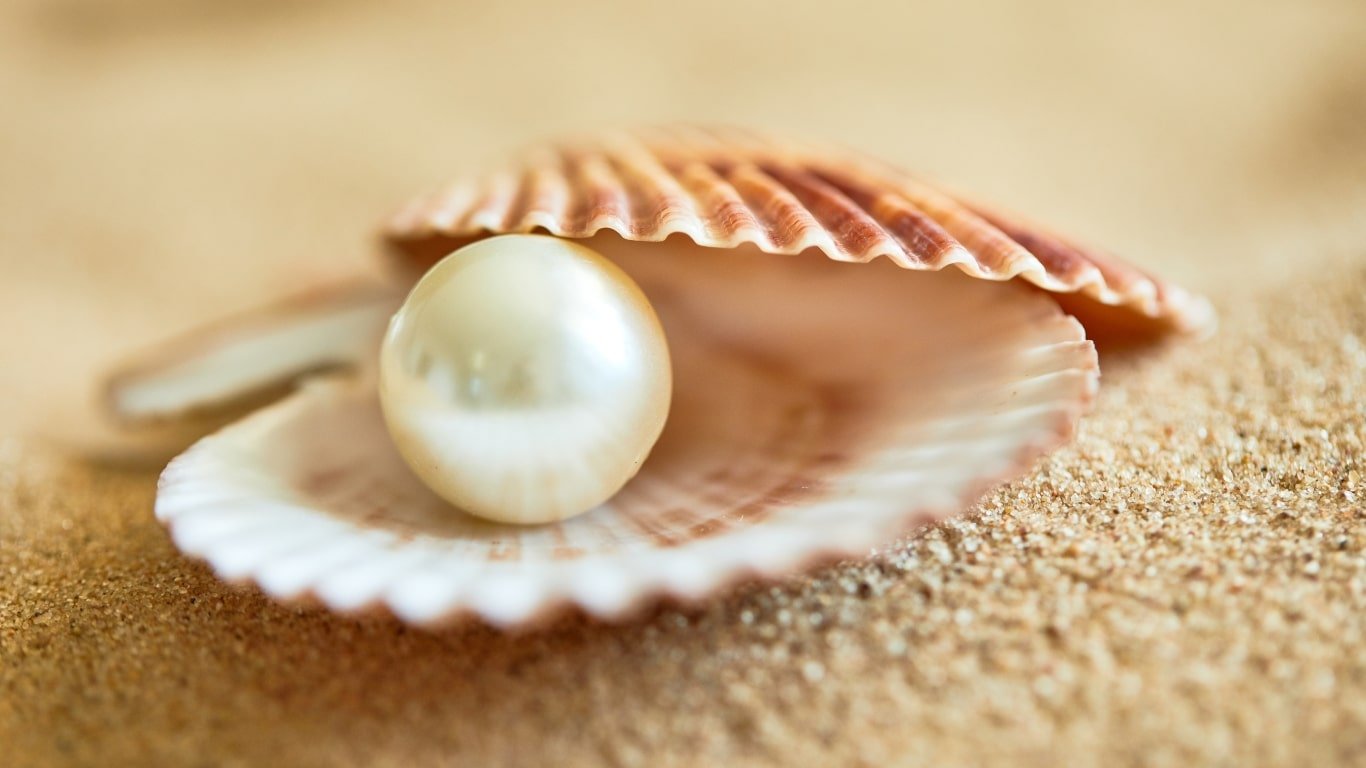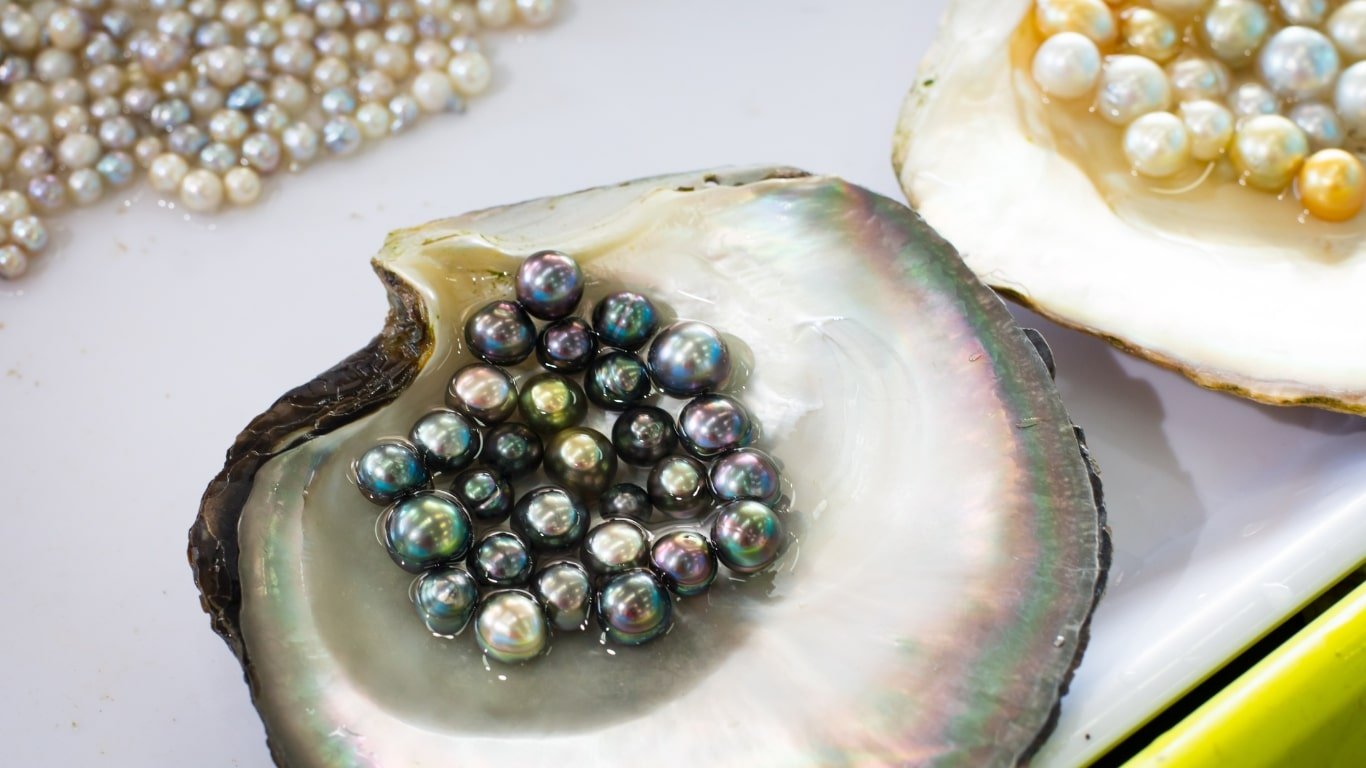The Formation of Natural Pearls
Natural pearls are some of the most unique and valuable gemstones in the world, formed organically within mollusks without any human intervention. Their origin, shrouded in mystery and biological marvel, has captivated civilizations for thousands of years. Unlike most gemstones that are mined from the earth, natural pearls are created by living organisms, primarily oysters and mussels, through a complex biological process. In this article, we will take an in-depth look at how natural pearls form, the factors that influence their development, and why these pearls are so rare and precious today.
What are Pearls?
Pearls are organic gemstones formed inside the soft tissue of mollusks, particularly in species like oysters and freshwater mussels. They are composed almost entirely of a substance called nacre, commonly known as “mother of pearl.” Nacre consists of layers of calcium carbonate (usually in the mineral forms of aragonite or calcite) and conchiolin, an organic protein that binds the calcium carbonate crystals together. The smooth, lustrous surface of a pearl is the result of many thin, stacked layers of nacre reflecting and refracting light.
Can only oysters make pearls?

No, oysters are not the only mollusks that can make pearls; other creatures like mussels, clams, conchs, and even certain types of snails can also produce pearls. While oysters are most famous for their nacreous (shiny) pearls, freshwater mussels create pearls in rivers and lakes, and mollusks like abalone and conch produce non-nacreous pearls with unique colors and textures. Each type of mollusk forms pearls through a similar biological process, though the resulting pearls differ in appearance and rarity depending on the species.
The Pearl Formation Process: A Defense Mechanism
The process of natural pearl formation begins when an irritant becomes trapped inside a mollusk’s shell. This intrusion sets off a defensive biological response by the mollusk to protect its soft body. Let’s break down the steps involved:
Step 1: Entry of an Irritant
Contrary to the common myth that a grain of sand is the usual cause of a pearl’s formation, it is more likely that an irritant such as a parasite, small piece of debris, or even a fragment of the mollusk’s own tissue becomes lodged inside the shell. This irritant disturbs the mollusk’s soft body, causing irritation.
Step 2: Secretion of Nacre
To defend itself from this irritant, the mollusk’s mantle tissue, which is responsible for secreting the materials that build its shell, begins to coat the foreign object with nacre. The nacre secretion process works as a barrier between the irritant and the mollusk’s delicate tissues.
Nacre is made up of two primary materials:
- Calcium carbonate: The crystalline substance that forms the bulk of the mollusk’s shell.
- Conchiolin: A protein that binds the calcium carbonate crystals together and forms the structure of nacre.
The secretion of nacre doesn’t happen all at once; instead, it occurs in continuous, ultra-thin layers over time. Each new layer covers the irritant and smooths its surface, transforming it gradually into a pearl.
Step 3: Growth of the Pearl
As the mollusk continues to layer nacre around the irritant, the pearl grows larger and more lustrous over time. The thickness and quality of nacre layers determine the luster and beauty of the pearl. Since this process takes place inside the mollusk, without any outside interference, it can be a slow and unpredictable process. The longer the irritant remains inside the mollusk, the more nacre is deposited, leading to a more valuable pearl.
Step 4: Shape and Texture of the Pearl
The shape and surface of a natural pearl depend on several factors:
- Position of the irritant: If the irritant settles in a favorable spot inside the mollusk, such as deep in the mantle tissue, it has a better chance of growing into a perfectly round pearl. However, if the irritant becomes lodged near the shell or moves during nacre deposition, the pearl may develop into irregular, baroque shapes.
- Environment: The mollusk’s environment, including water temperature, salinity, and nutrient availability, plays a crucial role in the development of the pearl. Ideal conditions lead to smoother, more lustrous pearls, while less favorable conditions can result in rougher surfaces or less perfect shapes.
Factors Influencing Natural Pearl Formation
Several key factors determine how a natural pearl will develop. These factors include:
1. Type of Mollusk
Different species of mollusks produce pearls with varying characteristics:
- Saltwater Oysters: Pearls formed in saltwater oysters, especially species like the Pinctada genus (including the Akoya and South Sea oysters), tend to be rounder and more lustrous. These pearls are usually rarer and more valuable.
- Freshwater Mussels: Freshwater pearls form in mussels that inhabit rivers and lakes. These pearls are generally more varied in shape and may form in larger numbers within each mollusk.
2. The Intrusion Site
The location where the irritant becomes lodged inside the mollusk plays a significant role in determining the shape of the pearl. If the irritant is free to move within the mollusk’s soft tissue, the resulting pearl may develop an irregular or baroque shape. However, if the irritant remains stationary in a central part of the mollusk, the pearl may grow into a more spherical form.
3. Water Conditions
The quality of the water in which the mollusk resides also influences pearl development. Clear, clean water provides an optimal environment for the mollusk’s health and nacre production. Pearls formed in clean waters tend to have more uniform, higher-quality nacre. On the other hand, poor water conditions can lead to deformations or blemishes on the pearl’s surface.
4. Time
The longer the mollusk is allowed to grow the pearl, the thicker the layers of nacre that accumulate around the irritant. Pearls that take several years to form are generally considered more valuable because they have more layers of nacre, resulting in enhanced luster and durability.
How long does it take for a pearl to form?
The time it takes for a pearl to form depends on the type of mollusk and the environmental conditions, but on average, it can take anywhere from 6 months to 4 years. For cultured pearls, the process usually takes between 6 months to 3 years, depending on the type of pearl being cultivated. Saltwater pearls often take longer, with Akoya pearls forming in about 6 to 18 months, while South Sea and Tahitian pearls may take 2 to 4 years.
For natural pearls, the time is more variable since the process occurs without human intervention, but it generally takes several years for a high-quality natural pearl to develop due to the slow layering of nacre around the irritant.
Types of Natural Pearls

Natural pearls come in a variety of shapes, colors, and sizes, all of which are determined by the mollusk species, environmental factors, and the conditions under which they were formed. Some of the most well-known types of natural pearls include:
- Round Pearls: Considered the most desirable and rare, round pearls are highly prized for their perfect symmetry.
- Baroque Pearls: These are irregularly shaped pearls that may appear oval, teardrop-shaped, or asymmetrical. Though less symmetrical, baroque pearls are often celebrated for their unique character.
- Keshi Pearls: A rare type of pearl that forms without a nucleus. They are 100% nacre and have a distinctive luster.
- Color Variations: Natural pearls can be white, cream, pink, gold, silver, or even black, depending on the species of mollusk and environmental factors.
The Rarity of Natural Pearls
Natural pearls are extremely rare, which is a significant factor in their high value. Historically, natural pearls were discovered by chance, often while harvesting oysters for food. Finding a single pearl among thousands of oysters required immense time and effort. As a result, pearls became symbols of wealth, power, and status in ancient civilizations from the Middle East to Europe and Asia.
Today, natural pearls are even rarer due to overfishing, pollution, and habitat destruction. While natural pearls can still be found, they are usually discovered through painstaking searches in protected natural habitats or as incidental finds.
How rare is it to find a pearl in an oyster?
Finding a natural pearl in an oyster is extremely rare, with estimates suggesting that only 1 in 10,000 wild oysters will contain a pearl. Even when a pearl is present, it may not be of high quality or suitable for jewelry. This rarity is one of the reasons natural pearls have historically been so valuable. Today, most pearls on the market are cultured, where the process is controlled, and the chances of producing a pearl are much higher. However, discovering a natural pearl in the wild remains a rare and prized occurrence.
Comparison to Cultured Pearls
While natural pearls form spontaneously in nature, cultured pearls are created by human intervention. Cultured pearls, which dominate the modern pearl market, are formed when a technician manually inserts an irritant (such as a small bead or piece of tissue) into a mollusk. This process accelerates pearl production and allows for greater control over the size, shape, and quality of the pearl.
While both natural and cultured pearls are made of nacre and are created by living mollusks, natural pearls are entirely organic, while cultured pearls often have a bead core.
Historical Significance of Natural Pearls
Natural pearls have held an esteemed place in human history. In ancient Rome, they were considered the ultimate status symbol, and Cleopatra is said to have dissolved a large pearl in vinegar to win a bet with Mark Antony. In the Middle East, pearl diving was a key industry for centuries, and Persian Gulf pearls were among the most sought-after treasures in the world.
During the Renaissance and into the 19th century, natural pearls were symbols of royalty and luxury. Pearls adorned the crowns and garments of European monarchs, and the discovery of natural pearls in the Americas fueled new trade networks.
Conservation and the Future of Natural Pearls
Due to overharvesting and environmental degradation, natural pearls are now more precious than ever. Efforts to protect wild mollusk populations and clean up aquatic ecosystems are critical to ensuring that natural pearl formation can continue in the wild. Additionally, some organizations and conservationists are working to preserve natural pearl-producing environments by creating marine sanctuaries and regulating fishing practices.
Conclusion
The formation of natural pearls is a rare and remarkable process that highlights the beauty and mystery of nature. Created by mollusks in response to an irritant, these organic gemstones have captivated humans for centuries with their unique luster and timeless elegance. While natural pearls are becoming increasingly rare, they remain highly coveted symbols of luxury and sophistication, representing the incredible interplay between biology, chance, and time.

